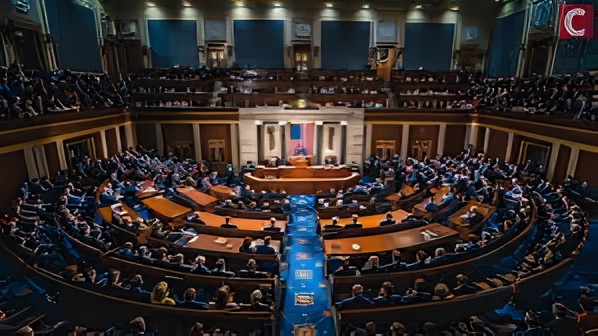The United States House of Representatives on July 17, 2025, passed the U.S. stablecoin bill, establishing the first federal framework for crypto regulation.
The legislation, which sailed through with a 308-122 bipartisan vote, is now headed to President Donald Trump’s desk for his anticipated signature.
The passage of the U.S. stablecoin bill, formally known as the Guiding and Establishing National Innovation for U.S. Stablecoin Act, is a victory for the crypto industry, which was said to have invested over $119 million in the 2024 election cycle, to push for pro-crypto policies.
This development comes after Trump had declared his intention to overhaul U.S. cryptocurrency policies.
During the bill’s hearing, tension escalated in the House of Representatives as some lawmakers expressed their frustration with Trump and his family members promoting their crypto projects.
Recall that Trump’s crypto ventures include a meme coin called $TRUMP, launched in January, and a business called World Liberty Financial, a crypto company owned partly by the president.
However, the White House has said there are no conflicts of interest present for Trump and that his assets are in a trust managed by his children.
What are Stablecoins?
Stablecoins include Tether’s USDT and Circle’s USDC. They are critical to the crypto ecosystem, enabling traders to move funds swiftly and cheaply compared to traditional banking.
Why Stablecoin Regulation Matters
Stablecoins have surged in popularity, with transactions reportedly hitting $28 trillion last year, surpassing financial institutions like Mastercard and Visa combined.
The U.S. House of Representatives said that by establishing clear rules, the U.S. stablecoin bill aims to protect consumers, curb financial instability, and solidify the U.S. dollar’s dominance in the digital realm.
What’s in the bill?
The stablecoin bill sets stringent standards for stablecoin issuers, particularly those with over $10 billion in assets, who will now face oversight from the Federal Reserve and the Office of the Comptroller of the Currency.
Smaller issuers will fall under state regulators, ensuring a tiered approach to stablecoin regulation.
Key provisions include:
Reserve Requirements: Stablecoins must be fully backed by cash or U.S. Treasuries.
Transparency: Issuers must disclose reserve holdings monthly.
Consumer Protections: Priority in bankruptcy proceedings for stablecoin holders.
Restrictions: Bans on yield-bearing consumer stablecoins and a prohibition on Congress members profiting from stablecoins.
Aside from the U.S. stablecoin bill, House lawmakers also passed two other crypto bills, sending them to the Senate for consideration.
One lays out a regulatory framework for crypto, and the other would ban the U.S. from issuing a central bank digital currency.





